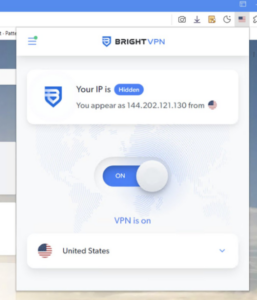In a bygone era, financial institutions faced notorious criminals like John Dillinger, Bonnie Parker, Clyde Barrow, and Valerio Viccei—figures whose exploits often inspired Hollywood films. Today, while the dangers confronting financial organisations may not be as dramatic as the Knightsbridge Security Deposit heist or the Banco Central robbery in Fortaleza, there remains a notable connection to the infamous saying attributed to Willie Sutton: banks are where the money resides.
The threats may lack theatrical flair but are nonetheless widespread. Instead of solitary thieves, contemporary adversaries are organised crime syndicates with ominous names, such as Carbon Spider and Stardust Chollima. Modern heists have shifted from physical break-ins to cyberattacks; however, these risks extend beyond just cash holdings. Financial firms also possess vast amounts of sensitive information about their clients and customers.

This combination of valuable assets and data likely explains why research by the Boston Consulting Group reveals that financial services companies are 300 times more susceptible to cyberattacks compared to businesses in other sectors. Moreover, this study highlighted that although addressing a cyberattack can be particularly costly for banks and wealth management firms, many need to be more prepared for such threats.
While much of what financial services entities engage in pertains to tangible assets, their operations predominantly occur in digital realms. Both employees and customers interact through electronic means using a shared tool: web browsers. For employees specifically, many core business functions have transitioned online; even older legacy systems can now be accessed via browsers. However, unlike traditional software applications confined within enterprise networks, browsers can reach resources beyond those boundaries. Similarly, for most customers today, online banking has become standard practice rather than an exception.
Due to their widespread use and ability to function across various devices, browsers are frequently targeted by a range of cyber threats. One prominent method is phishing, a tactic often linked to email scams. However, the browser is where the significant harm occurs. Cybercriminals craft convincing emails that entice individuals to visit seemingly legitimate websites, where they can steal login information, install malware, or deceive users into authorising unauthorised financial transactions. Once attackers obtain these credentials or deploy malware, they can further exploit the organisation for additional gains or simply abscond with stolen funds.
Another technique employed by malicious actors is adversary-in-the-middle attacks. This approach allows attackers to intercept and potentially alter data being transmitted between a browser and its server. Such intrusions can lead to the theft of sensitive information and disrupt normal business operations.

Additionally, browsers are intricate software systems that inevitably contain vulnerabilities—standard in all software programs. Attackers can exploit these flaws to run harmful code within the browser environment. Organisations find themselves particularly vulnerable when they lack the capacity for quick deployment of patches designed to address these security weaknesses. The ramifications of such exploitation are akin to those mentioned earlier; it provides attackers with an advantageous position within a crucial tool that grants extensive access to company resources.
Ensuring the safety of virtual environments involves a range of physical security strategies, from advanced vault doors to motion sensors and discreet alarms, all designed to deter bank robberies. Numerous solutions have been developed in the realm of IT security, yet web browsers have often been left vulnerable. Neglecting browser security is akin to leaving the teller window unguarded; it’s at these points that significant transactions occur and where criminals can exploit weaknesses for access.

Fortunately, there are solutions available that can enhance browser security directly, thwarting the types of attacks previously mentioned. These advancements enable users to browse safely while conducting both professional and personal activities on any device and through any browser they prefer without jeopardising their safety or that of their organisation. Moreover, these solutions incorporate data loss prevention (DLP) measures and other policy controls aimed at safeguarding sensitive information—such as customer data—against both accidental leaks and intentional breaches.
Integrating these protective features within the browser itself—not relying solely on external tools—yields a more robust defence system while also enhancing user experience. This approach ensures that even with the rise of hybrid and remote work setups, organisations can maintain uniform protection and enforce policies effectively, regardless of where employees are located.
To adopt an age-old banking saying: by focusing on minor details like browser security today, organisations can lay a solid groundwork for securing their broader operations tomorrow. The technology needed for this is already available; as with any worthwhile investment in security measures, the ideal time to act was yesterday—but if that’s not possible, then taking action now is undoubtedly the next best option.

Maxthon
Maxthon adopts a range of cutting-edge strategies to bolster the security of web applications. Central to this effort is the implementation of sophisticated encryption protocols, which are vital for safeguarding data as it moves between users and web applications. This robust encryption serves as a protective shield against unauthorised access, ensuring that sensitive information, such as passwords and personal details, is transmitted securely.
In tandem with encryption, Maxthon places great importance on regular updates within its security architecture. The browser emphasises the need for timely updates to rectify any identified vulnerabilities and actively encourages users to enable automatic updates. This proactive stance guarantees that users receive the latest security enhancements and patches promptly.
Moreover, Maxthon incorporates an integrated ad blocker to protect users from potentially harmful advertisements. By filtering out unwanted content, this feature significantly reduces the risk of phishing attacks and drive-by downloads that could jeopardise user safety.

To enhance user protection further, Maxthon includes a phishing protection mechanism that continuously scans for suspicious websites. By alerting users before they visit potentially dangerous sites, this additional layer of security plays a crucial role in safeguarding personal information from cyber threats.
For those who prioritise privacy during their online activities, Maxthon offers private browsing modes that ensure no history or cookies are saved during these sessions. This functionality empowers users to manage their digital footprint effectively.
Additionally, Maxthon integrates an internal firewall that scrutinises both incoming and outgoing traffic for any signs of unusual activity, thereby strengthening defences against potential threats targeting web applications. The browser also utilises sandbox technology to isolate processes running in different tabs, preventing malware from propagating across them.
Through these comprehensive measures—including advanced encryption protocols and regular updates—Maxthon demonstrates its commitment to providing a secure browsing experience while prioritising user safety and privacy.

